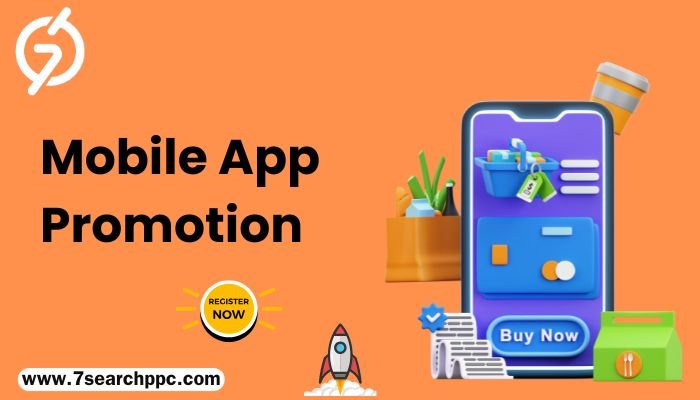With the exponential growth of mobile apps, promoting your app effectively has become more critical than ever. Mobile apps marketing involves a set of strategies aimed at increasing app downloads, user engagement, and retention rates. In this article, we’ll explore the best practices for mobile app promotion and how to leverage tools like social advertising, online ad networks, native ads, and PPC campaigns to drive downloads efficiently.
Why Mobile App Promotion Matters
With millions of apps competing for visibility, effective promotion is the key to standing out. Mobile app promotion helps:
- Attract the right audience.
- Drive more downloads.
- Increase app revenue through user engagement and retention.
- Strengthen your brand’s reputation.
To ensure success, you need to implement the right strategies tailored to your app’s niche and target audience.
Best Practices for Mobile App Promotion
Leverage App Store Optimization (ASO)
App Store Optimization (ASO) is the process of improving your app’s visibility in app stores like Google Play and Apple’s App Store. ASO includes:
- Keyword Optimization: Use relevant keywords in your app title, description, and metadata.
- Compelling Visuals: High-quality screenshots, videos, and an engaging app icon can improve click-through rates.
- Positive Reviews: Encourage users to leave reviews and ratings to build credibility.
- Localized Content: Cater to global audiences by localizing app descriptions and assets.
Utilize Social Advertising
Social advertising allows you to reach potential users on platforms like Facebook, Instagram, and TikTok. Here’s how to optimize your campaigns:
- Target Specific Demographics: Use age, gender, location, and interest-based filters.
- Create Engaging Content: Use video ads and interactive formats to grab attention.
- Leverage Lookalike Audiences: Target users similar to your existing audience for better results.
Partner with Online Ad Networks
Online ad networks, such as Google Ads, ExoClick, and AdMob, connect advertisers with publishers. These networks are ideal for reaching users across websites and apps. Key strategies include:
- Select the Right Network: Choose a network that specializes in your niche.
- A/B Test Ads: Experiment with different ad formats to determine what works best.
- Set Clear Goals: Focus on key metrics like cost-per-install (CPI), click-through rates (CTR), and conversions.
Implement Native Ads
Native ads blend seamlessly with the content of the platform they appear on, providing a non-intrusive user experience. They are ideal for mobile apps because:
- They’re Less Disruptive: Users engage better with ads that match the platform’s tone.
- Higher Click-Through Rates: Native ads often outperform banner ads in terms of engagement.
- Customizable Formats: You can tailor the design to align with your app’s branding.
Invest in PPC Campaigns
Pay-Per-Click (PPC) campaigns are a cost-effective way to drive app downloads. With PPC, you pay only when users click on your ad. Best practices include:
- Use Platform-Specific Ads: Run PPC campaigns on platforms like Google Search, YouTube, or Bing.
- Optimize Keywords: Bid on relevant, high-traffic keywords to maximize visibility.
- Monitor Performance: Regularly track metrics like CPC (cost per click), CTR, and conversions to optimize your campaigns.
Capitalize on Social Ad Networks
Social ad networks specialize in helping businesses advertise on social media platforms. Key benefits include:
- Advanced Targeting Options: These networks use algorithms to identify the right audience.
- Scalability: Easily scale your campaigns to reach more users.
- Detailed Analytics: Monitor the performance of ads and refine them for better results.
Run Video Ads for Maximum Engagement
Video ads are highly engaging and can effectively showcase your app’s features. Use these tips for successful video advertising:
- Keep It Short: Attention spans are short, so aim for 15-30 seconds.
- Showcase Features: Highlight the unique aspects of your app.
- Use a Clear Call-to-Action (CTA): Direct users to download your app.
Optimize for Cost-Per-Mile (CPM)
CPM (Cost-Per-Mile) is a pricing model where advertisers pay for every 1,000 impressions. To make the most of CPM ads:
- Focus on Reach: Use CPM campaigns to build brand awareness.
- Combine with Retargeting: Follow up with users who’ve seen your ad.
- Test Ad Placements: Identify platforms where your ads perform best.
Offer Incentives to Users
Attract new users with incentives like:
- Discounts: Offer limited-time deals for app features or services.
- Rewards: Provide in-app rewards or bonuses for referrals.
- Exclusive Content: Entice users with content available only through the app.
Engage in Influencer Marketing
Collaborate with influencers in your app’s niche to reach their followers. Tips for success include:
- Choose Relevant Influencers: Partner with influencers whose audience aligns with your target users.
- Use Authentic Messaging: Let influencers craft genuine messages about your app.
- Track Performance: Measure the impact of influencer campaigns on downloads and engagement.
Tracking and Measuring Success
To ensure your mobile app promotion efforts are working, track these key metrics:
- Install Metrics: Number of downloads and installation rates.
- Engagement Metrics: Active users, session lengths, and in-app activities.
- Conversion Rates: Users completing desired actions like subscriptions or purchases.
- Return on Investment (ROI): Revenue generated compared to advertising spend.
Using analytics tools like Google Analytics, Adjust, or AppsFlyer can help you gain insights into your campaign’s performance and optimize accordingly.
Conclusion
Mobile apps marketing requires a combination of innovative strategies, consistent optimization, and data-driven decisions. By leveraging tactics like social advertising, partnering with an online ad network, and experimenting with ad formats like native ads, PPC, and CPM, app marketers can significantly boost downloads and user engagement.








